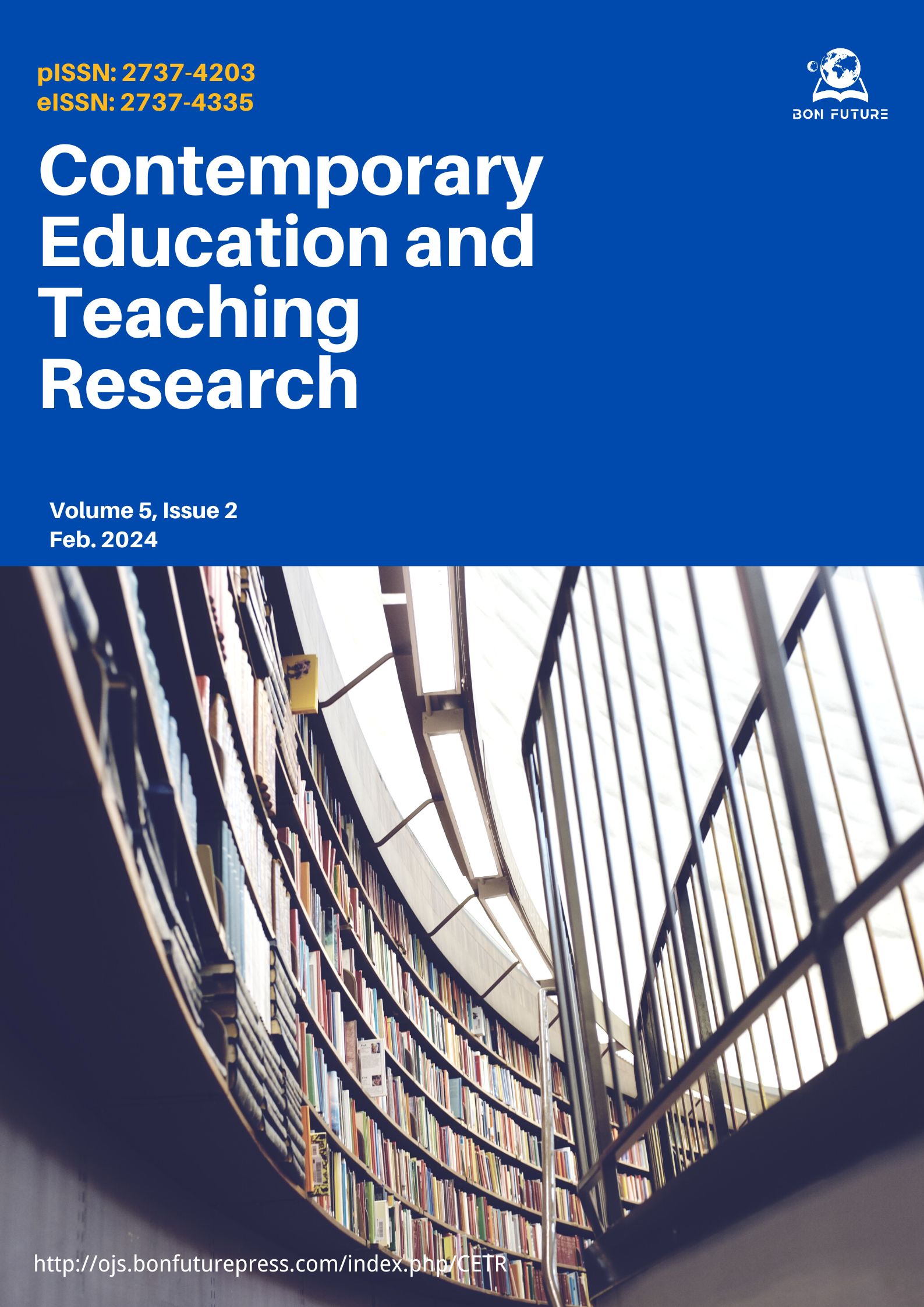Telecollaborative Task Design in a Content-Language-Integrated-Learning Context: Content, Communication, Cognitive, Culture
DOI:
https://doi.org/10.61360/BoniCETR242015870202Keywords:
Task Design, CLIL, TelecollaborationAbstract
This study explores approaches on telecollaborative task design in a Content-Language-Integrated-Learning (CLIL) context for language courses. This study discusses integration of task-based telecollaboration into a CLIL course and concludes feasible guidelines on the task design in terms of content, communication, cognitive and culture. The results of the study may give insights for telecollaborative teaching practitioners.
References
Andrés, J. B. (2012). CLIL: Perspectives from a competency-based approach in the spanish context. In Estilos De aprendizaje. Investigaciones Y experiencias: [V Congreso Mundial De Estilos De Aprendizaje].
Brown, H. (1980). Principles of language learning and teaching. London: Longman.
Byram, M. (1989). Cultural studies in foreign language education . 46. Multilingual Matters.
Byram, M. (1997). Cultural awareness’ as vocabulary learning. Language Learning Journal, 16(01), 51–57.
Chomsky, N. (2006). Language and mind. Cambridge University Press.
Coyle, D. (2002). CLIL/EMILE—the european dimension: CLIL — A PEDAGOGICAL APPROACH 109 actions (D. Marsh, Ed.). Trends and Foresight Potential Public Services Contract DG EAC: European Commission,Strasbourg.
Coyle, D. (2006). Content and language integrated learning: Motivating learners and teachers. Scottish Languages Review, 13(05), 1–18.
Coyle, D., Hood, P., & Marsh, D. (2010). CLIL: Content and language integrated learning. Cambridge, England: Cambridge University Press.
Cubero, K. (2021). Theoretical proposal: Exploring the symbiosis of CLIL and PBL to foster an intercultural learning experience in EFL. DEDiCA Revista de Educação E Humanidades (Dreh), 2021(19), 267–288.
Dooly, M., & Vinagre, M. (2022). Research into practice: Virtual exchange in language teaching and learning. Language Teaching, 55(03), 392–406. https://doi.org/10.1017/S0261444821000069
Eslami, Z., & Garver, R. (2022). English language learners and project-based learning. Sense Publishers, 119–128. STEM project-based learning.
Fontecha, A. F. (2008). Review of CLIL implementation tools:The forgotten factor. In Global Practices of Language Teaching: Proceedings of the 2008 International Online Language Conference , 38–50.
Gao, Y., & Liu, X. (2019). A case study on effects of CLIL on college english curricula: Guided by the teaching guidelines of college english. Journal of Xi’an International Studies University. https://doi.org/10.16362/j.cnki.cn61-1457/h.2019.02.012
Glickman, C. (1991). Pretending not to know what we know. Educational Leadership, 48(08), 4–10.
Hampel, R. (2006). Rethinking task design for the digital age: A framework for language teaching and learning in a synchronous online environment. ReCALL, 18(01), 105–121.
Helm, F., & Guth, S. (2010). The multifarious goals of telecollaboration 2.0: Theoretical and practical implications. Telecollaboration, 02(01), 69–106.
Hunter, L. E., & Daw, N. D. (2021). Context-sensitive valuation and learning. Current Opinion in Behavioral Sciences, 2021(41), 122–127.
Joseph, H., & Nation, K. (2018). Examining incidental word learning during reading in children: The role of context. Journal of Experimental Child Psychology, 2018(116), 190–211.
Kurek, M., & Müller-Hartmann, A. (2017). Task design for telecollaborative exchanges: In search of new criteria. System, 2017(64), 7–10. https://doi.org/10.1016/j.system.2016.12.004
Lialikhova, D. (2019). We can do it together!”–But can they? How norwegian ninth graders co-constructed content and language knowledge through peer interaction in CLIL. Linguistics and Education, 2019(54), 100, 764.
Liddicoat, A. J., & Scarino, A. (2013). Intercultural language teaching and learning. John Wiley & Sons.
Luther, A. (2000). The" old" method of teaching vs. the" new" method of teaching. Journal of Thought, 35(02), 59–69.
Müller-Hartmann, A., & Kurek, M. (2016). Virtual group formation and the process of task design in online intercultural exchanges. Online Intercultural Exchange: Policy, Pedagogy, Practice, 131–149. Routledge.
Netten, J., & Germain, C. (2024). A new paradigm for the learning of a second or foreign language: The neurolinguistic approach. Neuroeducation, 01(01), 85–114.
Ó Ceallaigh, T. J., Ní Mhurchú, S., & Ní Chróinín, D. (2017). Balancing content and language in CLIL: The experiences of teachers and learners. Journal of Immersion and Content-Based Language Education, 05(01), 58–86.
O’Dowd, R. (2016). Emerging trends and new directions in telecollaborative learning. Calico Journal, 33(3), 291–310.
O’Dowd, R. (2018). From telecollaboration to virtual exchange: State-of-the-art and the role of UNI collaboration in moving forward. Journal of Virtual Exchange, 2018(01), 1–23.
O’Dowd, R. (2021). Virtual exchange: Moving forward into the next decade. Computer Assisted Language Learning, 34(03), 209–224.
O’Dowd, R., & Waire, P. (2009). Critical issues in telecollaborative task design. Computer Assisted Language Learning, 34(03), 173–188.
Pan, G., Seow, P., & Koh, K. (2021). An exploration into key roles in making project-based learning happen: Insights from a case study of a university. Journal of International Education in Business, 14(01), 109–129.
Rastelli, S. (2018). Neurolinguistics and second language teaching: A view from the crossroads. Second Language Research, 34(01), 103–123.
Potvin, A., Boardman, A., & Stamatis, K. (2021). Consequential change: Teachers scale project-based learning in English language arts. Teaching and Teacher Education, 2021(107), 1–13.
Rastelli, S. (2003). Task-based instruction. Language Teaching, 36(01), 1–14.
Vygotsky, L., & Cole, M. (1978). Mind in society: Development of higher psychological processes. Harvard university press.
Wicking, P., Barrera, J., & Suzuki, S. (2021). International virtual exchange: Task design, implementation and assessment. Meijo University Journal of the Faculty of Foreign Studies, 2021(04), 6–71.
Zhao, Y., Chang, J., & Liu, Z. (2020). Localization of content and language integrated instruction at the universities in china. Foreign Languages in China. https://doi.org/10.13564/j.cnki.issn.1672-9382.2020.05.009
Published
Issue
Section
License
Copyright (c) 2024 Author

This work is licensed under a Creative Commons Attribution 4.0 International License.



